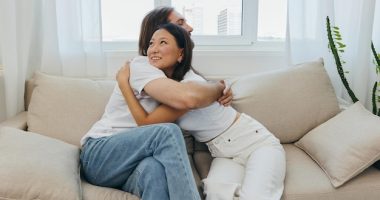In recent years, the Brazilian Air Force has embraced digital transformation in healthcare by implementing electronic patient records (EPR). A new study by researchers Patrícia Mesquita Vilas Boas, Luiza Jane Eyre de Souza Vieira, Geraldo Bezerra da Silva Júnior, Geison Vasconcelos Lira, and Juliana Gomes Ramalho de Oliveira has provided an in-depth look into how this technological advancement is performing in practice. Conducted between March and May 2021 with 234 Air Force physicians, the study analyzes the usage, benefits, and challenges of EPR within the service’s medical units. Initial findings reveal that a significant 64.5% of the facilities had adopted EPR about three years prior to the study, with approximately 81% of the physicians undergoing specific training. The research highlights the system’s positive impact on storing medical records, enhancing recording efficiency, and overall work dynamics, indicating an increase in productivity. However, the study also uncovers ongoing issues such as frequent equipment malfunctions and system errors. This comprehensive examination not only evaluates the present state of EPR in the Brazilian Air Force but also contributes to the broader discussion on the effective integration of digital systems in military healthcare environments.
The modernization of healthcare through digital means has become a strategic focus globally, aiming at enhancing the efficiency, accuracy, and accessibility of medical services. The Brazilian Air Force’s integration of Electronic Patient Records (EPR) within its healthcare system aligns with these broader trends, but also addresses unique challenges inherent in military environments, where mobility, speed, and security are paramount.
The impetus for deploying EPR systems in the Brazilian Air Force can be traced back to several key factors. First, there is the global push towards digitization as a means to streamline operations and improve healthcare outcomes. In the context of military health services, the reliable, fast, and secure access to medical records is crucial for the effective treatment of personnel, especially when deployed in remote or varied locations. The adoption of EPR systems thus serves not only operational efficiency but also strategic readiness.
Additionally, the move towards digital record-keeping in the armed forces reflects broader government initiatives aimed at enhancing public sector transparency and accountability. By digitizing health records, the Brazilian Air Force not only optimizes medical treatment but also improves oversight and compliance with health data regulations and policies.
This transition to EPR systems, however, brings with it significant challenges. Military environments are particularly demanding with regards to data security, given the sensitive nature of information and the potential for breaches that could compromise both individual and national security. Therefore, the implementation of such systems within the Brazilian Air Force had to be meticulously planned and executed to uphold the highest standards of data protection.
The study conducted by Patricia Mesquita Vilas Boas and her colleagues aimed to shed light on how these systems have been adopted and adapted to meet the specific needs of the Brazilian Air Force. Their research provides crucial insights into not only the functional benefits but also the operational hurdles encountered since the adoption of EPR.
Their investigation covers several key areas of concern, including the adequacy of training provided to physicians, the usability of the systems, and the reliability of the technology used. The training aspect is particularly crucial, as the effectiveness of any digital system hinges significantly on the users’ ability to operate it proficiently. Feedback from the 234 physicians who participated in the study indicates the level of adaptation and satisfaction among the end users, which directly impacts patient care quality.
Furthermore, operational challenges such as system errors and equipment malfunctions highlight the growing pains associated with implementing sophisticated IT solutions in complex environments like those of the military. These insights are invaluable for ongoing efforts to refine and enhance the system, ensuring that it meets the unique demands of military healthcare provision.
In sum, this study not only charts the progress of EPR implementation within the Brazilian Air Force but also contributes essential perspectives to the ongoing discussion surrounding digital transformation in military healthcare settings globally. The findings aid in understanding both the potential and the pitfalls of such transformative initiatives, offering a detailed blueprint for other military organizations considering similar digital healthcare integrations.
The methodology employed by researchers Patrícia Mesquita Vilas Boas and her team was structured to provide a comprehensive analysis of the integration and impact of Electronic Patient Records (EPR) within the Brazilian Air Force. The research was carried out through a mixed-methods approach, combining quantitative and qualitative data to offer a well-rounded view of the implementation and usage of EPR systems.
### Survey Design
The core of the study involved a detailed survey distributed to 234 Air Force physicians who were actively using the EPR systems in various medical units across the country. The questionnaire was meticulously designed to capture a wide range of data points including the extent of EPR usage, the effectiveness of training programs, the ease of use of the systems, and the challenges faced by the users in daily operations.
### Participant Selection
Participants were selected through a stratified sampling technique to ensure a representative mix of users in terms of experience, geographic location, and military rank. This method helped in minimizing bias and allowed for the extraction of meaningful insights across different demographics and operational settings.
### Data Collection
The primary data collection was conducted over a period of three months, from March to May 2021. Physicians were asked to fill out the electronic survey, which included both Likert-scale questions and open-ended responses, allowing researchers to quantify satisfaction and usability while also collecting qualitative feedback on user experiences and system performance issues.
### Training and Usability Analysis
A significant portion of the survey concentrated on the training provided before the physicians were required to use the EPR systems. Questions were tailored to assess the adequacy, completeness, and effectiveness of the training programs, measuring how well-prepared physicians felt when starting to use these digital tools. Usability aspects of the EPR were also scrutinized to understand the functionality and user-friendliness of the interfaces provided.
### Technical Challenges
To specifically address the operational hurdles, the survey included sections dedicated to identifying common technical problems, such as software glitches, hardware malfunctions, and issues related to data security and privacy. This data was critical in understanding the technical reliability of the EPR systems implemented.
### Qualitative Interviews
In addition to the survey, the study also incorporated semi-structured interviews with a select group of participants. These interviews were aimed at diving deeper into specific issues identified in the surveys and to gather more detailed accounts of the physicians’ experiences with the EPR systems.
### Data Analysis
The collected data were then analyzed using statistical techniques to identify patterns and correlations. Quantitative data were subjected to statistical tests to ensure reliability and validity, while qualitative data were coded and thematically analyzed to extract deeper insights and elucidate complex issues not fully captured through quantitative measures.
### Ethical Considerations
All research protocols, including the survey and interview methodologies, were approved by an institutional review board. Participant confidentiality and data protection standards were rigorously adhered to, with all data anonymized before analysis to protect the identities of the individuals involved.
By utilizing this multi-faceted research methodology, the study by Patricia Mesquita Vilas Boas and her colleagues provided a nuanced understanding of the adoption and impact of EPR systems in the Brazilian Air Force, showcasing both the benefits and the challenges associated with digital transformations in military healthcare settings.
### Key Findings and Results
The study by Patrícia Mesquita Vilas Boas and her colleagues revealed several critical insights into the adoption and utilization of Electronic Patient Records (EPR) within the Brazilian Air Force. These findings are essential in assessing both the effectiveness of the implementation process and the impact of EPR on clinical operations.
#### Adoption and Training
One of the study’s primary findings was that over half of the facilities surveyed had implemented EPR systems approximately three years prior to the research period. This high adoption rate indicates a strong organizational push towards modernizing military healthcare through digital technology. Interestingly, about 81% of the physicians interviewed had received formal training specific to EPR systems, reflecting a significant investment in ensuring skilled usage of these platforms. However, despite the broad rollout of training programs, there remained a discrepancy in the comfort level and proficiency among physicians, suggesting variability in training quality or the learning curve associated with EPR technology.
#### Impact on Healthcare Delivery
The data demonstrated a notable improvement in the efficiency and reliability of medical record-keeping. Most physicians reported that EPR systems facilitated quicker access to patient histories and streamlined the management of medical records across multiple points of care. This not only enhanced the dynamic of medical teams but also, importantly, contributed to better-informed clinical decisions and a reduction in errors associated with manual record-handling.
#### Technical Challenges
Despite the positive impact on operational efficiency, the study also uncovered several significant challenges. One recurrent theme was the issue of frequent system errors and equipment malfunctions which disrupted workflows and potentially compromised patient care. These technical difficulties underscore the complex nature of deploying sophisticated IT solutions in environments that demand high reliability and security.
#### System Usability and Satisfaction
Further analysis revealed mixed responses regarding the user-friendliness of the EPR interfaces. While some physicians found the systems intuitive and helpful, others struggled with navigating them efficiently, which could detract from their overall potential to enhance productivity. This variability points to the need for continuous user feedback and system optimization to ensure that EPR technologies adequately meet the diverse needs of healthcare providers within the military.
#### Security Concerns
Given the sensitive nature of military operations and the confidentiality required around personnel health data, security emerged as a pivotal concern. Although most users expressed confidence in the security measures implemented with the EPR systems, there was still a palpable apprehension about data breaches and the potential exposure of sensitive information, highlighting the need for ongoing enhancements in cybersecurity protocols.
#### Future Directions
The study emphasizes the necessity for ongoing training and support to fully leverage the benefits of EPR systems. It also suggests that future upgrades and system modifications be informed by user feedback to address the specific challenges faced by physicians in their daily operations. Additionally, resolving hardware and software issues swiftly is crucial to maintain trust in the system’s reliability.
### Conclusion
Overall, the adoption of Electronic Patient Records by the Brazilian Air Force appears to be a positive step towards digital transformation in healthcare, offering substantial benefits in operational efficiency. However, the journey remains fraught with challenges that need to be addressed through continuous improvement and adaptive strategies. This study not only provides valuable insights for the Brazilian Air Force but also serves as a noteworthy case study for other military organizations globally, contributing to the broader discourse on digital health implementations in demanding operational contexts.
### Future Directions and Final Thoughts
The study conducted by Patrícia Mesquita Vilas Boas and her colleagues illuminates a vital path forward for the Brazilian Air Force and potentially other military bodies worldwide looking to harness the advantages of digital transformations in healthcare. This research acts as both a benchmark and a blueprint for future improvements, underlining the continuous nature of adaptation required in the utilization of Electronic Patient Records (EPR) systems.
#### Embracing Continuous Training
Arguably, one of the most significant takeaways from this study is the critical role of continuous training and support. The variability in user comfort and proficiency underscores the need for ongoing education tailored to individual learning curves and local operational specifics. Future training programs should aim to be more adaptive, possibly incorporating simulations and real-case scenario training that can better prepare users for the typical and atypical challenges engaged in digital healthcare systems.
#### Focusing on User Feedback
The integration of continuous user feedback mechanisms can facilitate smoother operational transitions and adjustments in system design. Providing platforms where physicians and staff can voice their experiences, propose system tweaks, or report bugs in real-time will enable more agile responses to operational deficiencies. This can also help ensure that the EPR systems evolve in tandem with the changing dynamics of healthcare and technology landscapes.
#### Enhancing System Reliability and Security
Technical challenges such as system errors and malfunctions are critical pain points that can undermine trust and user efficacy. The Brazilian Air Force must prioritize high reliability, scheduling regular maintenance, and possibly incorporating more robust hardware solutions. On the security front, fortifying data protection measures through advanced encryption, multi-factor authentication, and continuous security audits will remain paramount, especially as cyber threats become more sophisticated.
#### Strengthening Interoperability
As military personnel often operate across various regions and under different conditions, enhancing system interoperability could substantially boost effectiveness. EPR systems should be equipped to function seamlessly with other databases and technology used by military and civilian healthcare providers, ensuring that records are consistently accessible and accurate, regardless of the patient’s location.
#### Forward-Looking Innovations
Looking further ahead, the incorporation of artificial intelligence and machine learning could refine the functionality of EPR systems, offering predictive analytics to anticipate health trends and potential medical incidents before they occur. This can be particularly beneficial in a military context, where early detection and rapid response are critical.
### Final Thoughts
The journey of integrating EPR within the Brazilian Air Force is a testament to the potential transformative power of digital healthcare systems in enhancing operational efficiency, patient care, and strategic readiness. While the path has been set with robust foundations, the road ahead involves vigilant management, responsive adaptations, and proactive innovations.
This study does more than just assess the current state; it sparks a crucial discourse on how military organizations, and broader healthcare environments, can navigate the complexities of digital transformations. By approaching these challenges as opportunities for growth and learning, the Brazilian Air Force can continue to set benchmarks for digital excellence in military healthcare, offering valuable lessons and insights to similar institutions worldwide. This continuous evolution in healthcare practices will not only optimize medical care but also enhance overall mission readiness and personnel welfare—cornerstones of military effectiveness and security.









